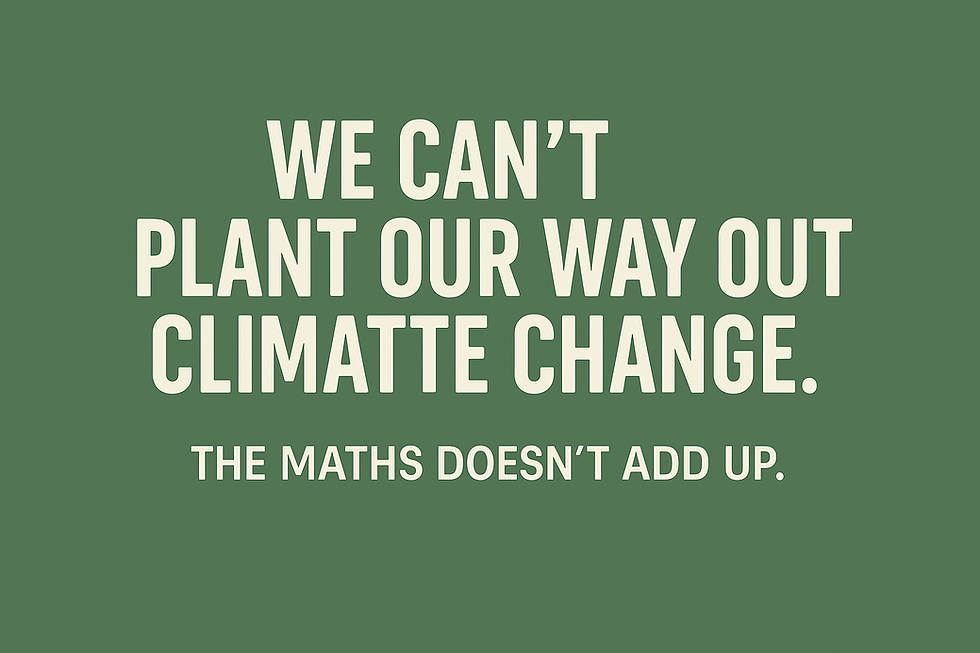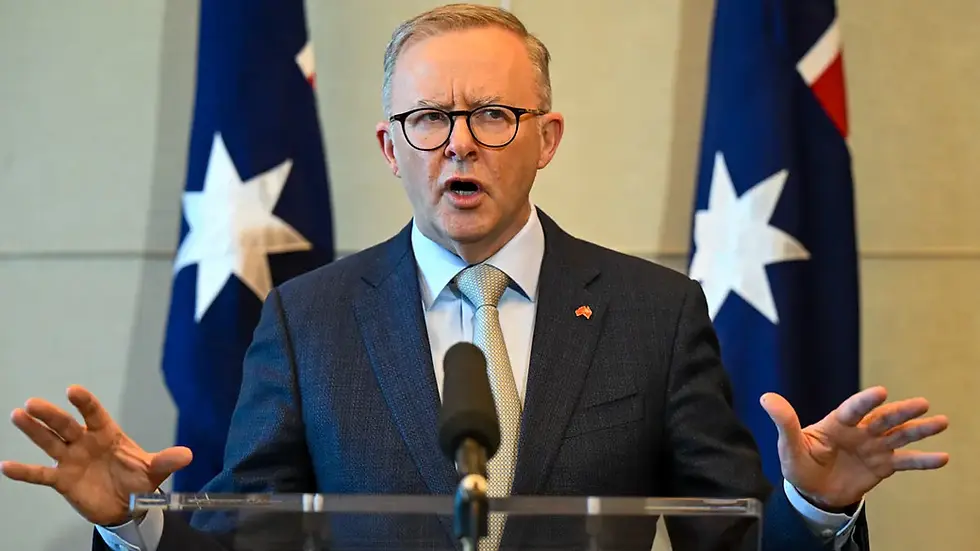Planting Trees Won’t Save Us from Climate Change
- Gregory Andrews

- Sep 22, 2025
- 3 min read
Updated: Sep 22, 2025
Australia’s newly announced 2035 climate target leans heavily on mass tree planting to offset emissions. It’s easy to love the idea that planting trees can solve the climate crisis. Who doesn’t like the smell of eucalyptus and the vision of shady forests and birdsong? Trees are powerful symbols of life, resilience and hope. But as comforting as it sounds, the science is clear: planting trees alone will not save us from climate change.
Respected economist Allan Kohler has just called it out as unrealistic for Australia. And a recent study published in Nature Communications Earth & Environment shows the same at a global level. The analysis exposes how impossible it would be to use afforestation - turning more land into forest - as an offset for the massive volumes of carbon pollution being emitted from fossil fuels.
The Scale Problem
The world’s 200 largest fossil fuel companies hold reserves that, if burned, would release the equivalent of 673 billion tonnes of CO₂. That is more than the world’s entire remaining carbon budget for keeping warming below 1.5 °C, a threshold we’ve already hit.
Offsetting these reserves with trees would require an area greater than all of Australia and New Zealand to be covered with new forests. Imagine every desert, farm, town, and ecosystem from Perth to Auckland replaced with plantations. It’s absurd.
And that’s just the reserves that fossil fuel companies already control. To offset all human historical emissions from fossil fuels and cement would take more than half of all habitable land on Earth - or virtually all non-barren land. That means no space left for agriculture, communities, or most existing ecosystems.
As the authors write, “afforestation at the scale required is neither spatially nor ecologically feasible.”
The Cost Problem
Even if the land were available, the financial burden would be staggering. Using afforestation to cover current fossil fuel reserves would cost about US$11 trillion.
And if governments set a serious carbon price of say, more than US$150 per tonne of CO₂, the 200 largest fossil fuel companies would all have a negative “Net Environmental Valuation.” In other words, their coal, gas and oil reserves would be environmental liabilities, not assets. Planting our way out of climate change isn’t just spatially impossible. It’s economically unviable.
The Ecological Problem
Not all land can support trees. Much is too dry, too cold, or already occupied by valuable farmland or ecosystems that are not forests. Converting those areas would damage biodiversity, reduce food security, and displace people.
And forests themselves are vulnerable. Fires, droughts, storms, and diseases can all wipe out decades of stored carbon in a single season. Carbon locked in fossil fuels underground for millions of years cannot be safely equated with carbon stored in trees that might burn or die from drought in the next summer.
What Trees Can Do
None of this means we should abandon tree planting. Restoring forests has real value: protecting biodiversity, cooling landscapes and cities, repairing soils, and strengthening water cycles. Protecting old growth forests and regenerating degraded lands are urgent priorities.
But these should be complements to reducing emissions, not substitutes. Trees are allies in climate action, not scapegoats for inaction and greenwashing.
What We Must Do
The conclusion is inescapable: the only way to stop climate breakdown is to stop burning fossil fuels. Planting trees is a good thing. But not if it’s used to justify more coal mines, oil wells, or gas fields. That’s dangerous greenwashing. The numbers don’t lie. We can’t offset our way out of the climate crisis.
The path forward is simple, if politically hard: keep fossil fuels in the ground, electrify everything, build renewables, protect and restore ecosystems, and cut pollution at its source. Planting trees won’t save us. Courage, honesty and decisive climate action will.





Comments